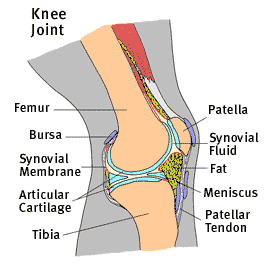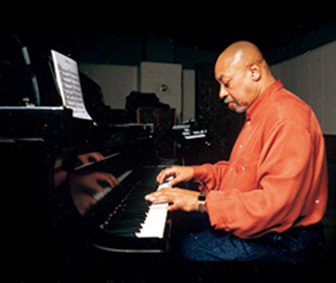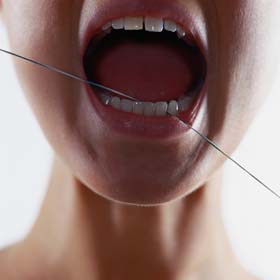Joint Update
 There are only a few structures that make up our joints, but many different conditions that can affect them. Inflammation, tearing, strain and weakness can all become debilitating chronic conditions. So first, let's understand our joints a little better.
Joints involve a coming together or a joining of bones which generally involve the ability to move. So our joints are where bones are involved in movement. Now there are a few exceptions to this, such as the joints in our skull known as sutures and the joints in our sacrum. These have become much less flexible due to fusion which occurs as a natural bi-product of use. Many people believe that there is no movement of these joints, but we have come to realize that this is inaccurate. There is slight movement and symptoms can occur if this movement is blocked just as would notice symptoms if our knee was locked.
There are only a few structures that make up our joints, but many different conditions that can affect them. Inflammation, tearing, strain and weakness can all become debilitating chronic conditions. So first, let's understand our joints a little better.
Joints involve a coming together or a joining of bones which generally involve the ability to move. So our joints are where bones are involved in movement. Now there are a few exceptions to this, such as the joints in our skull known as sutures and the joints in our sacrum. These have become much less flexible due to fusion which occurs as a natural bi-product of use. Many people believe that there is no movement of these joints, but we have come to realize that this is inaccurate. There is slight movement and symptoms can occur if this movement is blocked just as would notice symptoms if our knee was locked.
Each joint is made up of the bones that come together along with the support mechanism that allows for movement: ligaments, cartilage, busae tendons, muscles, membranes and encapsulation. When symptoms develop, they generally are the result of long-term imbalances in alignment, nutrition, metabolism and support. Symptoms can involve multiple parts of a joint and relief is not the same as resolution. Resolution is restoration of the joint to its original condition, whereas relief may just be a compensatory mechanism which is only temporary before the unresolved issues spread to adjoining tissues and create other problems.
So let's look at the most common conditions:
Fibromyalgia - this is simply the name for a condition of pain in muscle and the connecting tissue of the muscle to bones and joints. It really doesn't provide us with an explanation as to the cause or the progression of the condition. In fact, to the medical community it is still a mystery. But we all agree that it begins with inflammation, so by focusing on the elements that can cause inflammation, we can find natural options to help reduce and resolve symptoms. The most likely scenario is a build-up of toxic debris in the area affected or a degrading of the natural tissue due to nutritional deficiency or chronic misuse. The result is a stimulation of the immune response, causing inflammation, pain and the formation of fibrous scar tissue. This process is usually unchecked once it begins due to adrenal fatigue, stress, dehydration, infection and tissue starvation.
In addressing fibromyalgia, it is vitally important to tone down the inflammation with whole vitamin C, herbs such as Boswellia and Devil's Claw while nutritionally supporting the joint with calcium, vitamin D, manganese and vitamin B12. Then reducing adhesions that have formed while making sure the alignment of the joint and the attached soft tissue is restored. Once the pain and inflammation have been reduced, a period of detoxification and FAR Infrared Sauna treatments are recommended.
Lupus - many people wouldn't think of Lupus when considering joints, but the truth is that lupus affects connective tissue devastatingly and destructively. It is more common in women than men, especially women in their 20's and 30's. Again, the adrenal glands are key to managing inflammation, while modulating the action of the immune system. This may be a body-wide response to a severe stress, an undiagnosed infection or high levels of acidic metabolites stored in the space between superficial fascial layers. One of the primary recommendations is Echinacea Angustifolia and Echinacea Purpurea. This combination has been shown in clinical studies to reduce autoimmune symptomology. We also suggest Biost by Standard Process which is the perfect formula for modulating connective tissue health. Again detoxification is important to reduce molecular mimicry that is a common aspect of any autoimmune condition.
Tendinitis - inflammation of the connection between the muscles and the bones is very common, particularly with repetitive stress and motion of a joint. We think of tennis players (tennis elbow), computer operators (carpal tunnel), violinists, golfers, runners and those who work on an assembly line. By always using joints in the same direction and the same way, specific angles of the joints can become worn down and irritated. This is often the case when nutritional support has not been high enough to handle the challenges created by the activity. Boswellia, Celery Seed and Horsetail are great options for reducing the inflammation, but re-alignment through chiropractic care and increase in range of motion with less effort through myofascial therapy and bodywork, are important. We use Standard Process's Ligaplex I and Ligaplex II as strong repair formulas to restore balance and strength to the joint.
 Bursitis - the bursae sacs are located in many joints and help to provide a cushioned surface for tendons that are moving across the bone surface. These sacs contain fluid similar in nature to synovial joint fluid and when irritated can become inflamed and painful when moved. Teachers are often bursitis sufferers because of writing on a board, while pianists also commonly develop bursitis in their shoulders. Nutrition is the core component in bursitis with absorbable calcium, acidifiers, phosphorus and sesame seed oil. Once again, alignment is a critical component of reducing the stress on the joint. Later doses of ginger and turmeric help to keep the joint relaxed and inflammation down.
Bursitis - the bursae sacs are located in many joints and help to provide a cushioned surface for tendons that are moving across the bone surface. These sacs contain fluid similar in nature to synovial joint fluid and when irritated can become inflamed and painful when moved. Teachers are often bursitis sufferers because of writing on a board, while pianists also commonly develop bursitis in their shoulders. Nutrition is the core component in bursitis with absorbable calcium, acidifiers, phosphorus and sesame seed oil. Once again, alignment is a critical component of reducing the stress on the joint. Later doses of ginger and turmeric help to keep the joint relaxed and inflammation down.
Carpal Tunnel Syndrome - this is a type of tendonitis where there is an impingement of the nerves as they pass through the bones and connective tissue of the wrist. It is very common in those who put pressure on their hands, such as gymnasts, massage therapists, computer users and even weightlifters. According to the research of Dr. Janet Travell, physician to President Kennedy, the propensity for Carpal Tunnell Syndrome is very high in individuals with a deficiency of B6 pyridoxine. So localized heat applications along with B6 Niacinamide and alignment of the wrist is key to resolving this chronic condition.
 TMJ - you may not think of the jaw as a joint, but it is and it's moving more than any other joint (more in some than in others!). Maxillofacial surgery, a blow to the jaw, getting your teeth cleaned or even the mumps can all contribute to the inflammation, pain and subluxation of the Temporo-Mandibular Joint. This really is one of the most unique joints in the body, a hinge that actually slides in and out of socket to allow your mouth to open. The natural position for the lower jaw is for the mouth to be closed with the teeth slightly apart. Opening the mouth is the active movement, while closing the mouth is the passive movement. Clenching the teeth is a hyperactive movement that requires intense muscular strength and development. Chronic clenching, particularly during sleep, can cause the controlling muscles to become hypertrophied and to actually resist normal opening of the jaw. Over time this wears down the joint and allows popping and clicking to occur when the joint is opening and closing. Even teeth cleaning when the jaw is propped open can slide the joint out of place and then create problems for weeks.
TMJ - you may not think of the jaw as a joint, but it is and it's moving more than any other joint (more in some than in others!). Maxillofacial surgery, a blow to the jaw, getting your teeth cleaned or even the mumps can all contribute to the inflammation, pain and subluxation of the Temporo-Mandibular Joint. This really is one of the most unique joints in the body, a hinge that actually slides in and out of socket to allow your mouth to open. The natural position for the lower jaw is for the mouth to be closed with the teeth slightly apart. Opening the mouth is the active movement, while closing the mouth is the passive movement. Clenching the teeth is a hyperactive movement that requires intense muscular strength and development. Chronic clenching, particularly during sleep, can cause the controlling muscles to become hypertrophied and to actually resist normal opening of the jaw. Over time this wears down the joint and allows popping and clicking to occur when the joint is opening and closing. Even teeth cleaning when the jaw is propped open can slide the joint out of place and then create problems for weeks.
One way to see if your jaw has an issue is to watch yourself open and close your mouth in the mirror. Does it swing to one side or shift suddenly part-way through its movement? Working with TMJ is a three part process: nutrition includes Parotid gland support to reduce the pressure of the parotid glands on the joint, chiropractic alignment of the jaw and adjoining structures, and myofascial release inside the mouth to release the muscles and connecting tissues that restrict the jaw movement.
Sprains & Strains - muscles and bones work together through the action of pulling. By examining the angles of pull, we can see where muscles are pulling too much, even when they should be at rest. This is especially evident in the muscles of posture. Over time, contracting these muscles does not change their length, because they are already semi-contracted, instead only the internal muscle tension increases. This is identical to what happens in isometric or static exercise. These are the muscles that will suffer from fatigue, partly because the static state reduces the pumping action that muscles have when contracting and relaxing. Use of the same muscles over and over will not only cause fatigue, but spasms and fibrosis.
Once in this state, a muscle can resist movement, actually causing a sprain of the joint. Sensors within the muscle and the adjoining tendinous areas control the stretch and tension of a muscle, protecting the muscle from damage. When a muscle is stretched too quickly or too far, a muscle strain will occur. So a sprain involves the entire joint, while a strain is an issue of the muscle specifically. Other muscle issues are fatigue, adhesions, inflammation, pain, and weakness and all of these if left unresolved, can lead to a sprain or strain. One of the most damaging approaches to muscles is improper muscle building or overbuilding of muscle tissue. It is important to realize that exercise does not build muscle, it tears muscle down. Following exercise, nutrition and rest are what allow for the muscle to rebuild and strengthen. Otherwise, the muscle will actually begin to absorb nutrition from other tissues of the body, depleting the body as a whole. For this reason, once muscle building ceases, muscle atrophy occurs quickly, due to the depletion of tissue reserves of nutrients.
By paying attention to your workouts, and feeding your muscle tissue while resting when needed, you can prevent these injuries from occurring. But if you've wrecked your body, here is our surefire remedy:
Traumeel homeopathic ointment & tablets. Ligaplex II tissue rebuilding formula. Calcium Lactate - the perfect ionized calcium formula for muscles and soft tissue to relax spasms and increase muscle efficiency. Cataplex ACP - increases fluid transfer, removing accumulated edema or inflammatory fluids from the muscle.
The best way to have healthy joints for life is to pay attention to their needs. Feed your body with the nutrition you need, rest when your joints have been overused, vary your activities and get treatment when needed for joint symptoms. Joints cannot be restored once they have been degraded, and although replacement is possible, it's never the same as what you were born with!
